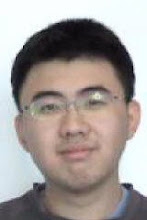
The event which inspired Yves Tanguy (1900-1955) to suddenly become an artist may seem the stuff of Hollywood fiction, but is true nonetheless: in 1923 he leapt off a bus to examine two strange paintings that had caught his eye in a passing gallery window. They were by Giorgio de Chirico, and the gallery, operated by Paul Guillaume, was the same in which Surrealist impresario and theoretician André Breton discovered the art of de Chirico several years earlier. Although Tanguy was entirely untrained as an artist, and didn't begin to paint until after his encounter with the de Chirico paintings, he quickly developed a wholly original visual language and style that would place him in the foremost rank of the Surrealist movement.

Tanguy's entry into the Surrealist group came as the result of a confluence of his personal qualities and external circumstances. To begin with, Tanguy's personality was already predisposed to a love of the absurd. He stated in an interview that `about 1924 I came across the first issue of La Revue Surréaliste and I became very much interested in it. No so much in the paintings reproduced in it as in the general spirit of its contents.'Sir Roland Penrose has related that Tanguy, during military service, would often delight in shocking others by eating his own socks at the mess table or relishing spiders, soaked in wine, on a slice of bread a practice that apparently didn't en in later years. Having completed his service, Tanguy returned to Paris in 1922 and was reunited with an old friend, the poet Jacques Prévert. Joined by Maurice Duhamel, the men took an apartment in Montparnasse that would become a hub of Surrrealist activity. IN 1925, Tanguy met Breton through mutual friends; the two discovered they held similar philosophical and aesthetic views, and Breton became an immediate champion of he promising young artist.

Breton first reproduced Tanguy's paintings and drawings in the 15 June 1926 issue of his La Revue Surréaliste; he was thereafter recognized as one of the `official' Surrealist artists. These early paintings show bizarre, incongruous images with a deliberate disregard for conventional style and compositions. A supernatural mood was already emerging, with murky backgrounds and flashes of light permeating the composition. These early works reflect the stylistic influence of André Masson, Max Ernst and Joan Miro (who was a frequent visitor to the Montparnasse apartment), as well as intellectual ideas culled from Tanguy's studies in metaphysics, psychiatry, and alchemy. Some of these early oils reveal the initial emergence of motifs such as the `weblike' tightropes and amorphous `anemone-like bodies that would appear in more simplified form in Tanguy's later, less literal compositions.

By 1927, the year of his first one-man exhibition at the Galerie Surréalste in Paris, Tanguy's mature style had emerged, one that would change little over the course of successive decades. According to James Thrall Soby, Tanguy `sometimes talked irritatedly of painters who felt obiged to evolve a new approach every few years, as a means of freshening their own and the public's interest in the work. Once he had found his direction and he fount it with startling abruptness he followed it with devotion and purity, secret I his quest and oblivious of he pressures of fashion and commerce".Certainly one can detect a progression however relaxed in the course of his work, including he evolution of his forms and a refinement of his palette over his 30 year career, but the overriding autograph throughout his oeuvre is unmistakable. Indeed, he once admitted that `here in the United states the only change I can distinguish in my work is possibly in my palette:.The aesthetic for which Tanguy became known depicts indefinable `inhabitants; of an otherworldly place, rendered in a meticulously detailed style. The objects seem real, yet we known them to be non-existent; they bridge the line between the abstract and figurative. The compositions regularly defy gravity and conventional rules of perspective. Most striking about these forms is that, in true Surrealist fashion, they seem at once familiar yet completely unidentifiable.
The evocation of landscape is the overriding constant in Tanguy's art. It is, according to Penrose, the aspect that granted Tanguy a unique place among the Surrealist painters, and influenced Dali an artist with full academic credentials to treat his trompe l'oeil landscapes in a similar way, although, Penrose notes, with Tanguy the atmospheric depths are more variable, more subtle and more profound. Tanguy's pictures possess only one familiar reference point the horizon in which to relate them to landscape in a traditional sense. Yet the horizon sometimes appears as a hard dividing line, or it can melt away altogether.

Regardless of the particular `inhabitants' of his pictures, the consistent element in Tanguy's technique is his `dual manipulation of perspective, from far to near and from high to low. Naturally, conventional perspective presupposes both depth and height, but perhaps no other modern painter has so insistently dramatized an opposition between these two dimensions.Indeed, it is Tanguy's extreme manipulation of space which imparts such a disquieting mood to the works.
After his trip to Africa in 1930, Tanguy briefly experimented with underdrawing as a preliminary step in his paintings. He quickly abandoned the technique, he said for `I found that if I planned a picture beforehand, it never surprised me, and surprises are my pleasure in painting." What most interested Tanguy was the unpredictable procession of motifs, each suggested by and playing upon the one before, both metaphorically as well as visually. This focus on spontaneous relationships was a hallmark of Surrealist creativity; but also found expression in the exercise of `automatic writing' which all of the Surrealists practiced in one form or another.

没有评论:
发表评论